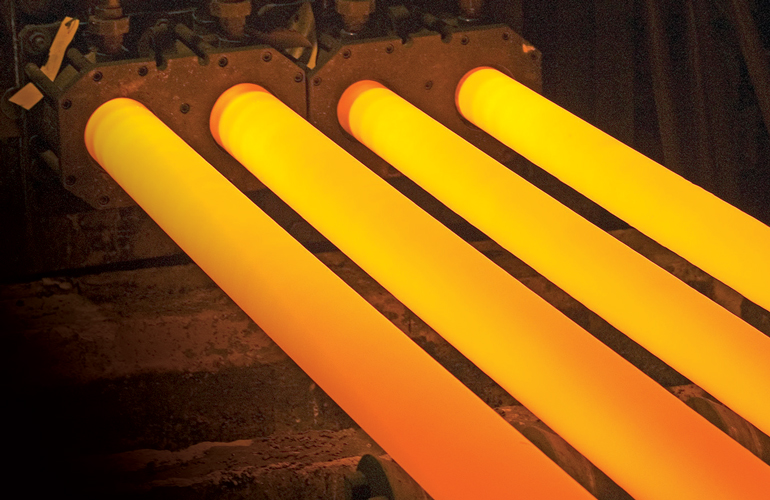
Overview
Dura-Bar is the world leader in the production, technology, and application of continuous cast iron bar stock. Dura-Bar’s process and material properties make it a practical alternative to several materials, resulting in superior performance and significant cost savings.
Process
There are many advantages to Dura-Bar. Some are found within the bar itself; others are by-products of the Dura-Bar process. Dura-Bar’s consistent fine-grained microstructure is a result of the bar being pulled from the bottom of the holding crucible, causing dross, slag, and other impurities float to the top, away from the opening of the die.
Properties
Consideration must be given to those properties that are most important for the application and the additional cost for going above the minimum acceptable levels.
- Dura-Bar ductile irons are good alternatives for most low-medium carbon steels:
- Grade 65-45-12 for low-carbon steels like 1010, 1018, 1020, 12L14, 1212 and 1215
- Grade 80-55-06 for medium-carbon steels like 1040, 1060, 1045, 1141 and 1144
- Grade 100-70-03 – for high wear resistance and in applications using heat treated steel with hardness values below 302 BHN
- Other materials are produced and tested in a multitude of locations, while Dura-Bar is made in only one location, a big key to our consistency.
- Dura-Bar property values are listed as minimums, while most steel is listed as “typicals.”
- Many material properties do not influence the performance of the part in the application. Usually, a few key properties are the deciding factor.
Cost Savings
Thousands of machine shops, OEM’s and repair facilities take advantage of Dura-Bar every day. The bottom line is companies usually switch to Dura-Bar to save money. The savings typically come from two areas – increased productivity and solutions to existing problems.
Sponsored content by Dura-Bar
Filed Under: Sponsored Content